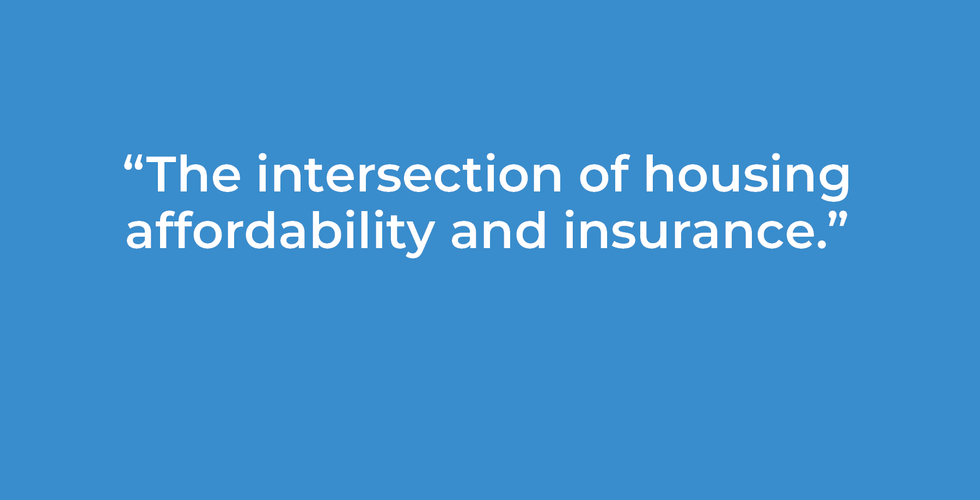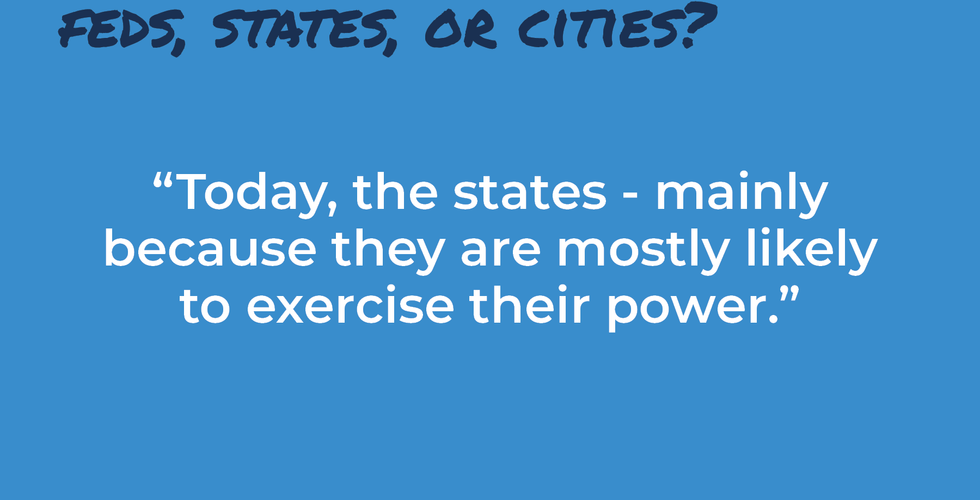LIHTC Leaders Series: Thom Amdur
- CREA
- Aug 21
- 6 min read

Having stumbled into the affordable housing industry by chance after a career shift from political campaigns and lobbying, Thom Amdur has found and created purpose through policy and community impact. These days, Thom is well-versed in the industry, having witnessed it’s growth from a niche concern to a bipartisan priority. He currently serves as Senior Vice President of Policy & Impact at Lincoln Avenue Communities (LAC), as well as Executive Director of Fairview Housing Partners. Hear more about Thom’s background, what he’s learned along the way, and his perspective on the future of affordable housing:
You've been in the affordable housing industry for over two decades. What first drew you to the LIHTC space, and what has kept you engaged all these years?
Like many people, I found affordable housing by accident. I started my career working on political campaigns and then in the Fall of 2003 I came to DC to work at a lobbying firm working on financial services and technology issues. A few weeks after moving to DC, I attended a Rosh Hashana brunch hosted by a family friend where I met Patty Winter, the CFO of the National Housing & Rehabilitation Association (NH&RA). Fast forward a year, I was back at the Rosh Hashana brunch chatting with Patty and mentioned I was looking to make a career change-- a few weeks later, I became the policy associate at NH&RA.
NH&RA provided me with many opportunities to grow professionally, and the work itself was challenging, rewarding, and constantly evolving. Because the policy and business environments are constantly changing, there is always something new to learn and niches to carve-out expertise within. Most importantly, I’ve been centered by the positive impact affordable housing has on the millions of households we serve and the millions more that are in need. It is gratifying to be working on a problem that is both important and solvable.
In your time working in affordable housing, what’s been the most significant shift or evolution you’ve witnessed in the field?
Twenty years ago, affordable housing was not an issue that resonated with many policy makers or the American public. Housing became a top national issue when the economy collapsed during the great financial crisis in 2008-2009. For a couple of years, the only new development many communities saw was affordable housing, and this construction was an important driver in the economic recovery. In some respects, along with inflation, the affordability crisis today is still partially the result of the lack of conventional development for the years coming out of the GFC (Global Financial Crisis).
Post-GFC, it became clear that that lack of affordable housing was both a red and blue state issue and that communities with more affordable housing options have been more economically vibrant and quicker to recover. From that point on, affordable housing became less of a niche issue and more of a bipartisan rallying point that we built a national coalition around.
Early in your career, you held a media relations and publishing role at Tax Credit Advisor (TCA). How has that experience shaped your perspective and approach to advocacy today?
Advocacy at its core is storytelling and great advocates, like great writers and journalists, are able to translate and distill complicated issues so people can not only understand them, but also emotionally connect with them. I like to think that writing my monthly column at TCA for more than a decade helped me hone my craft as an advocate. Additionally, collaborating with the editorial team and the broader NH&RA network to develop stories and sources was a great way to stay on top of issues and strengthen relationships with industry peers, which is incredibly helpful in building and maintaining coalitions.
As someone who has held leadership roles across multiple industry organizations, what’s one leadership lesson that’s stuck with you or transformed the way you lead?
Every important success I have had in my career has been the result of collaboration. Associations like NH&RA are built for people to come together, identify challenges, share ideas, collaborate on solutions and leverage collective relationships and reputations. Coming from an association background, I try to take a servant leadership approach. I see my colleagues at LAC as constituents and collaborators, and I think we get the best results when they are actively engaged in both the development of our policy strategy as well as its implementation. Similarly, I try to be an active contributor to peer networks like AHTCC (Affordable Housing Tax Credit Coalition), NMHC (National Multifamily Housing Council) and the Multifamily Impact Council. Even (and perhaps especially) when we are direct competitors within the industry, there is a significant opportunity to collaborate for the common good.
With LIHTC included in the recent Affordable Housing Credit Improvement Act (AHCIA), what developments are you most optimistic about? And looking ahead, what do you see as the next key priorities for affordable housing advocacy?
The new 25% test has the potential to expand 4% LIHTC production in high demand markets. There is a lot of pent-up demand for affordable housing and, speaking for LAC, we have many shovel-ready sites that have been waiting in line for PABs (private activity bonds). In the short-term advocates and stakeholders need to make sure we get the implementation of the BBBA (Build Back Better Act) correct.
First and foremost, HFAs (housing finance agencies) need to update QAPs (qualified allocation plans) and PAB allocation policies to ensure we are scaling bond allocations to the new test. The downside of the 25% test is that debt proceeds will decrease as an increasing portion of the debt stack is taxable. To fully realize the potential of the change, we also need to adopt an array of complimentary policies to fill the gaps. This should include setting up local bond recycling programs, offsetting decreased loan proceeds with policies that increase tax credit equity (e.g. higher developer fees on bond deals), as well as streamlined design, services, income targeting, and amenity requirements that can drive down the per unit cost.
In the medium term, there is still more work to do with Congress to adopt other priorities in the AHCIA as well as enhancements to increase investor demand and LIHTC pricing.
What motivates you to stay in this field through its ups and downs?
I am lucky to work in a role where I get to spend time with our residents and see first-hand how our work has a transformational impact on their lives. A few weeks ago, I was at a ribbon cutting for a new senior community we developed in rural Illinois. While we were waiting for the festivities to start, I chatted with one of our residents in the community garden. A retired marine veteran, he had a tough couple of years before moving into our community, having been diagnosed with a brain tumor and subsequently losing his job and then home during his treatment and recovery. He couldn’t have been happier with his new home, and hearing his story was a powerful reminder of why we do this work.
On top of that, I’m blessed to work with amazing colleagues at Lincoln Avenue Communities and Fairview Housing Partners as well as our industry partners and collaborators at the AHTCC, Multifamily Impact Council, NH&RA, NMHC, NCSHA (National Council of State Housing Agencies), and NAHB (National Association of Home Builders).
Are there any books, podcasts, or resources you recommend for staying informed and inspired in this work?
I was a history major in college and am inclined to look to the past to help inform strategy for the future. I recently read Lords of Finance: The Bankers Who Broke the World, by Liaquat Ahamed and The Price of Peace: Money Democracy, and the Life of John Maynard Keynes, by Zachary D. Carter, which are about the creation of the global central banking system and John Maynard Keynes’ subsequent role in shaping the international monetary system. Both provide interesting perspectives on how to manage inflation, global trade, and the role of government in stimulating the economy and feel very timely today. I am also excited by the framework laid out Abundance, by Ezra Klein and Derek Thompson as well as Tyler Cowen’s blog, Marginal Revolution, which provide progressive and conservative rationales for how and why we need to simplify land-use policy.
When you're not working to advance affordable housing, how do you like to spend your time outside the office?
We have three kids ages 10, 12, and 13 and that keeps our household pretty busy. My oldest has been very active in scouting, so four-season camping has become a big part of my life recently.
























